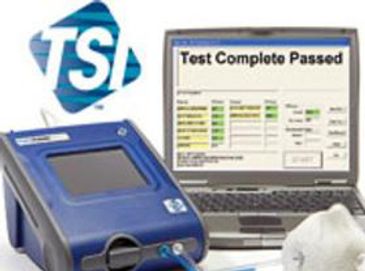Iniciaste sesión como:
filler@godaddy.com
Iniciaste sesión como:
filler@godaddy.com




A pass/fail test method that uses your sense of taste in order to detect leakage into the respirator facepiece. Whether the respirator passes or fails the test is based simply on you detecting leakage of the test substance into your facepiece. Two qualitative fit test methods accepted by OSHA are:
Saccharin, which leaves a sweet taste in your mouth;
Bitrex, which leaves a bitter taste in your mouth

Quantitative fit testing uses a machine to measure the actual amount of leakage into the facepiece and does not rely upon your sense of taste, smell, or irritation in order to detect leakage. The respirators used during this type of fit testing will have a probe attached to the facepiece that will be connected to the machine by a tube. A minimum fit factor of 100 is needed for an N95 respirator.
A written respiratory protection program is a key requirement of ensuring safety in your workplace and compliance with the Occupational Safety and Health Administration (OSHA).
Benefits of maintaining a written program include:

Employees who are required to use respirators will be trained such that they can demonstrate knowledge of the following:
For those unable to pass the N95 fit test due to factors such as facial hair, weight change, facial structure; there is a solution!
Powered Air-Purifying Respirators (PAPRs) can be described as respirators that protect the user by filtering out contaminants in the air and use a battery-operated blower to provide the user with clean air through a tight-fitting respirator, a loose-fitting hood, or a helmet.
A Controlled Air-Purifying Respirator, or CAPR is a proprietary version of a PAPR, which fulfills all of the same functions using a slightly different arrangement.
We're here for all your fit testing needs.
Safety Fit, Inc.
280 Trumbull Street, FL 12, Hartford, CT 06103
Usamos cookies para analizar el tráfico del sitio web y optimizar tu experiencia en el sitio. Al aceptar nuestro uso de cookies, tus datos se agruparán con los datos de todos los demás usuarios.